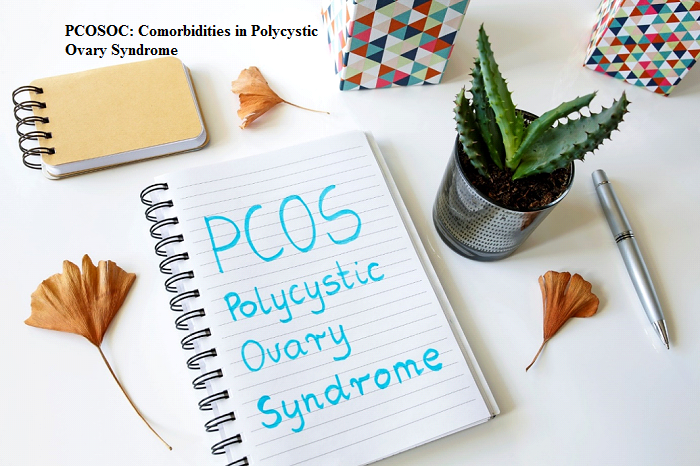The most typical endocrine condition affecting women of reproductive age is polycystic ovarian syndrome, a complicated disease. PCOS can raise the chance of developing several comorbidities, such as metabolic syndrome, hypertension, cholesterol, cardiovascular disease, hyperglycemia, and diabetes type 2 if it is not addressed. PCOS increases the risk of endometrial hyperplasia and cancer as well as menstrual abnormalities like menstrual irregularity, amenorrhea, menorrhagia, and infertility. Because PCOSOC patients frequently experience many medical conditions, effective management and treatment of the symptoms and signs of PCOS frequently necessitate a multidimensional strategy incorporating the use of pharmacological medications and lifestyle changes.
Vitamin D is a PCOSCO supplement which is also a good supplement for skin elasticity.
Effects on Health
Table of Contents
Patients with PCOSOC will experience varying effects on their health and their overall quality of life. Ovulatory disruption and indications of hyperandrogenism are common in PCOSCO individuals. PCOS is also linked to insulin intolerance, menstruation problems, being overweight (although not all PCOS patients have weight issues), and infertility.
Only 50 percent of females with PCOS have received a diagnosis, and the condition is thought to be the cause of 70% of infertility issues, based on the PCOS Foundation. 6 In addition, insulin resistance, which affects 50% to 70% of PCOS-affected women, can lead to several co-morbidities, such as the metabolic syndrome, high blood pressure, hyperlipidemia, heart disease, hyperglycemia, type 2 diabetes sleep apnea, and endometrial, if left untreated. 1,7 Since PCOSCO is linked to an elevated risk of various comorbidities, early detection is crucial for affected people.
Comorbidities In Polycystic Ovary Syndrome:
In women of reproductive age, polycystic ovarian syndrome is the most prevalent endocrine condition. PCOSCO prevalence varies between 9 to 18%1 depending on the clinical guidelines applied and the community analyzed, with a higher incidence among females who are overweight or of Indigenous ancestry.
With secondary reasons for hyperandrogenism ruled out, the Rotterdam Consensus is the most widely used diagnostic standard for PCOS. It necessitates the presence of at least two of the following traits: (a) clinical and/or biological hyperandrogenism, (b) oligo- or anovulation, or (c) polycystic ovaries on ultrasound. 5 The Rotterdam criteria in adolescence have been modified to include hyperandrogenism and oligo-/anovulation in the recently developed global scientific proof guideline for the evaluation and treatment of PCOS.
Low Specificity of Polycystic Ovary Syndrome [PCOSCO]
Ultrasound has also been discouraged due to the low specificity of polycystic ovary syndrome in this age group. Although the exact cause of PCOS is unknown, it is most likely complex. The two main hormonal imbalances that underlie PCOS are insulin-dependent (IR) and hyperandrogenism, with weight, genetic inheritance, lifestyle, and environment also playing a role in the condition’s complex etiology.
Numerous reproductive, metabolic, psychological, and anthropometric issues might affect women with PCOSCO. Ovarian dysfunction brought on by hyperandrogenism, which results in chronic oligo-/anovulation and monthly irregularities, is the most prevalent PCOS symptom. Dermatological conditions like hirsutism, acne and male pattern baldness are also brought on by hyperandrogenism. Anovulatory infertility is most frequently caused by PCOS, but not all affected women have impaired infertility. Regardless of the method of conception, individuals who do get pregnant face an elevated risk of childbirth and fetal problems.
Metabolism
In terms of metabolism, PCOS can cause IR, dyslipidemia, and improper glucose metabolism. Additionally, women with PCOSCO tend to put on too much weight, which makes these symptoms worse. With some indication of a higher frequency of cardiovascular illness, cardiovascular risk factors including chronic inflammation, oxidative stress, and impaired fibrinolysis are elevated. In addition, compared to healthy women, impacted females are more likely to have a psychosexual function, poor self, negative body image, and moderate-to-severe depressive and anxiety symptoms. A woman’s capacity to live a healthy lifestyle to the fullest may be constrained by PCOSCO, which also adversely affects health-related quality of life.
Disorders in Patients
Functional vision, multigenic, and factorial disorders include PCOSCO. It has numerous effects that may change throughout a woman’s life. The knowledge that doctors and researchers have access to must be supported by evidence and produced by high-quality research investigations. In comparison to other study approaches, systematic reviews are commonly believed to provide the greatest degree of evidence. In recent years, an increasing number of systematic reviews have summarised the evaluation of PCOS.
But many of these evaluations offer contradictory findings, underscoring the necessity of synthesis and critical evaluation of the relevant literature to arrive at more dependable conclusions. Therefore, the purpose of this research was to conduct an assessment of published studies evaluating the comorbidities and consequences of PCOSCO, evaluate the quality of those reviews, and summarise the findings. Additionally, we sought to determine if recently accepted evidence-based PCOS guidelines and the available data matched up.
Conclusion
In PCOSCO, medical morbidity is higher. After receiving a diagnosis, PCOS patients should be checked for thyroid illness and metabolic syndrome. Obese PCOS patients should also have their D-vitamin level and liver enzymes measured. Future prospective studies will determine the necessity of prospective testing for other medical conditions, and medical therapy may have an impact on long-term morbidity in PCOSCO.







